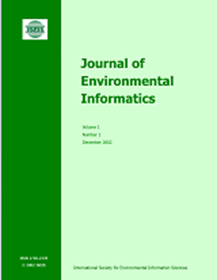Modelling Soil δ13C across the Tibetan Plateau Using Deep-Learning
IF 5.4
1区 环境科学与生态学
Q1 ENVIRONMENTAL SCIENCES
引用次数: 0
Abstract
Soil carbon isotopes (δ13C) provide reliable insights for studying soil carbon turnover at a long-term scale. The Tibetan Plateau (TP), often referred as “the third pole of the earth”, is highly sensitive to global climate change, and exhibits an early warning signal of global warming. Although many studies detected soil δ13C variability at site scales, there is still a knowledge gap existing in the spatial pattern of soil δ13C across the TP. In this study, we compiled a database of 198 topsoil δ13C observations from published literatures and used a modified multi-layer perceptron (MLP) neural network algorithm to predict the spatial pattern of topsoil δ13C and β (indicating the decomposition rate of soil organic carbon (SOC), calculated as δ13C divided by logarithmically converted SOC) at 500m resolution. Results showed that MLP model effectively predicted topsoil δ13C with a model efficiency of 0.72 and a root mean square error of 1.16‰. Topsoil δ13C varied significantly across different ecosystem types (p < 0.001) with a mean δ13C of –25.89 ± 1.15‰ (mean ± standard deviation) for forests, –24.91 ± 1.03‰ for shrublands, –22.95 ± 1.44‰ for grasslands, and –18.88 ± 2.37‰ for deserts. Furthermore, there was an increasing trend of predicted δ13C from the southeastern to the northwestern TP, likely linked to vegetation type and climatic conditions. β values were low in the eastern TP and higher in the northern and northwestern TP, indicating faster SOC turnover rate in the east TP compared to the north and northwest. This study represents the first effort to develop a fine resolution product of topsoil δ13C and β across the TP, which could provide an independent, data-driven benchmark for biogeochemical cycling models to study SOC turnover and terrestrial carbon-climate feedback over the TP under climate change.利用深度学习建立青藏高原土壤 δ13C 模型
土壤碳同位素(δ13C)为研究土壤碳的长期更替提供了可靠的见解。青藏高原(TP)常被称为 "地球第三极",对全球气候变化高度敏感,是全球变暖的预警信号。尽管许多研究发现了土壤δ13C在站点尺度上的变化,但在整个青藏高原土壤δ13C的空间模式方面仍存在知识空白。在本研究中,我们从已发表的文献中整理了 198 个表层土壤 δ13C 观测数据,并使用改进的多层感知器(MLP)神经网络算法预测了 500 米分辨率下表层土壤 δ13C 和 β(表示土壤有机碳(SOC)的分解率,计算方法为 δ13C 除以对数换算后的 SOC)的空间模式。结果表明,MLP 模型能有效预测表土 δ13C,模型效率为 0.72,均方根误差为 1.16‰。不同生态系统类型的表土δ13C差异显著(p < 0.001),森林的平均δ13C为-25.89±1.15‰(平均值±标准偏差),灌木林为-24.91±1.03‰,草地为-22.95±1.44‰,荒漠为-18.88±2.37‰。此外,预测的δ13C 从东南部到西北部有增加的趋势,这可能与植被类型和气候条件有关。β值在东部底栖生物区较低,而在北部和西北部底栖生物区较高,这表明东部底栖生物区的 SOC 转化率比北部和西北部快。这项研究首次开发了整个大陆坡表土δ13C 和 β 的精细分辨率产品,可为生物地球化学循环模型提供一个独立的、数据驱动的基准,以研究气候变化下大陆坡的 SOC 转化和陆地碳-气候反馈。
本文章由计算机程序翻译,如有差异,请以英文原文为准。
求助全文
约1分钟内获得全文
求助全文
来源期刊

Journal of Environmental Informatics
ENVIRONMENTAL SCIENCES-
CiteScore
12.40
自引率
2.90%
发文量
7
审稿时长
24 months
期刊介绍:
Journal of Environmental Informatics (JEI) is an international, peer-reviewed, and interdisciplinary publication designed to foster research innovation and discovery on basic science and information technology for addressing various environmental problems. The journal aims to motivate and enhance the integration of science and technology to help develop sustainable solutions that are consensus-oriented, risk-informed, scientifically-based and cost-effective. JEI serves researchers, educators and practitioners who are interested in theoretical and/or applied aspects of environmental science, regardless of disciplinary boundaries. The topics addressed by the journal include:
- Planning of energy, environmental and ecological management systems
- Simulation, optimization and Environmental decision support
- Environmental geomatics - GIS, RS and other spatial information technologies
- Informatics for environmental chemistry and biochemistry
- Environmental applications of functional materials
- Environmental phenomena at atomic, molecular and macromolecular scales
- Modeling of chemical, biological and environmental processes
- Modeling of biotechnological systems for enhanced pollution mitigation
- Computer graphics and visualization for environmental decision support
- Artificial intelligence and expert systems for environmental applications
- Environmental statistics and risk analysis
- Climate modeling, downscaling, impact assessment, and adaptation planning
- Other areas of environmental systems science and information technology.
 求助内容:
求助内容: 应助结果提醒方式:
应助结果提醒方式:


